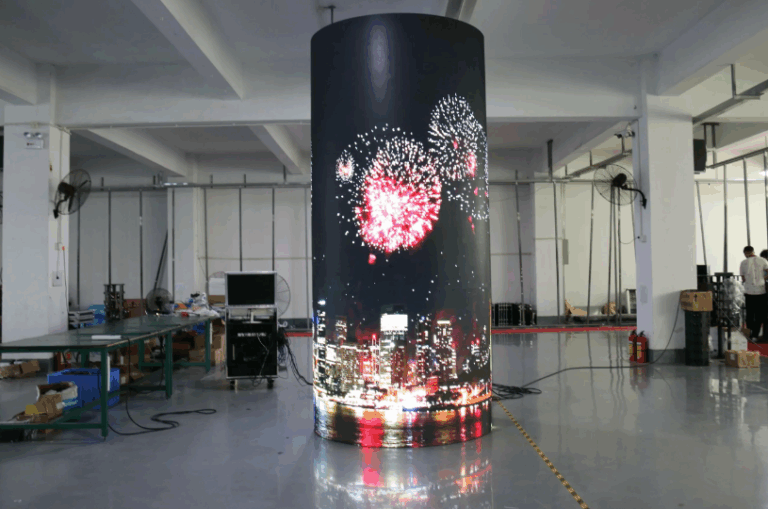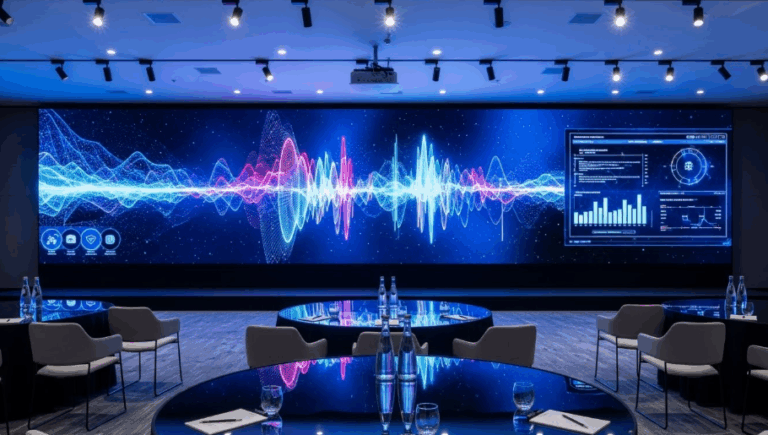Table of Contents
A. What is an LED Scoreboard?
B. Core Advantages of LED Scoreboards
C. Real-World Application Cases
D. How to Choose the Right LED Scoreboard?
E. Future Trends of LED Scoreboards
F. Conclusion
In modern sports events, LED scoreboards have become an indispensable piece of equipment. Whether it’s basketball, football, tennis, or athletics, they convey critical information to the audience in an intuitive, eye-catching, and efficient way. This article will explore the key role of LED scoreboards in sports venues, discussing their technical features, practical applications, and selection criteria.

A. What is an LED Scoreboard?
An LED scoreboard is a display device made using Light Emitting Diode (LED) technology. Compared to traditional flip-dot or liquid crystal displays, LED scoreboards offer higher brightness, energy efficiency, and durability, making them ideal for providing clear visuals in outdoor bright or challenging lighting environments.
A typical LED scoreboard can display real-time scores, game time, player information, and even play dynamic videos and advertisements. This multifunctionality makes the LED scoreboard not just a tool for information delivery but also a means to enhance the spectator experience.

B. Core Advantages of LED Scoreboards
- High Brightness and Clarity
LED scoreboards provide excellent visibility in any weather conditions. Even in direct sunlight, the content on the screen remains clear and legible, a feature that is particularly crucial for outdoor sports venues. - Video, Images, and Animated Graphics
LED scoreboards can display animated graphics, videos, and special color effects, enhancing the emotional and excitement experience for the audience during sports events. - Multifunctionality and Customization
LED video scoreboards can be customized to display event-specific information, including scores, remaining time, and game statistics. - Energy Efficiency and Environmentally Friendly
Modern LED technology consumes 30% less energy than traditional display technologies, with a lifespan of over 100,000 hours, significantly reducing operating and maintenance costs. - Remote Control and Intelligence
Through network connectivity, LED scoreboards can be remotely managed from a central control room, allowing for quick updates of game information and adapting to various event requirements.

C. Real-World Application Cases
- LED Scoreboards in Basketball Games
In a basketball game, the LED scoreboard not only shows the score and remaining time but can also display detailed statistics such as shooting accuracy and fouls. During tense moments, spectators can stay up-to-date with game dynamics, enhancing their viewing experience. - Real-Time Dynamic Display in Football
In football games, when a player scores, the LED scoreboard can instantly play a replay of the goal and display the scorer’s name, score statistics, and more. This real-time interaction not only increases fan engagement but also provides more advertising opportunities for event sponsors.
D. How to Choose the Right LED Scoreboard?
- Space and Structural Preparation
A detailed plan is needed, including the size of the LED digital scoreboard, the type of LED panels to be used, the frame, and the installation position. - Installation and Assembly of LED Scoreboards
First, the structure that will support the LED scoreboard must be built. Next, assemble the LED scoreboard, including the frame and LED modules. Afterward, install the video signal and power cables. - Configuration and Setup of LED Scoreboards
Once the LED scoreboard is fully assembled, it is important to test and adjust it to ensure it operates correctly. The technical team will carry out debugging to ensure perfect assembly. - After-Sales Service and Brand Reputation
Choosing a reputable brand and a supplier that offers comprehensive after-sales service ensures reliable support for equipment maintenance and upgrades.

E. Future Trends of LED Scoreboards
With the rapid development of 5G technology and artificial intelligence, LED scoreboards are gradually moving towards becoming smarter and more interactive. For example, using facial recognition technology, the scoreboard can automatically display customized content for specific fans. Combined with Augmented Reality (AR), it could even present game information in 3D form to the audience.
Sustainability is also a major focus for the future. Low-energy, high-efficiency LED displays are gradually replacing traditional products, becoming an integral part of building green sports venues.
F. Conclusion
LED scoreboards are not just display devices; they have become a vital part of modern sports events. From increasing game transparency to enhancing spectator interaction, their value cannot be overlooked. Whether you’re a sports venue operator or an event organizer, investing in a high-quality LED scoreboard is a worthwhile choice. As technology continues to advance, LED scoreboards will undoubtedly play an even more significant role in the sports industry in the future.





